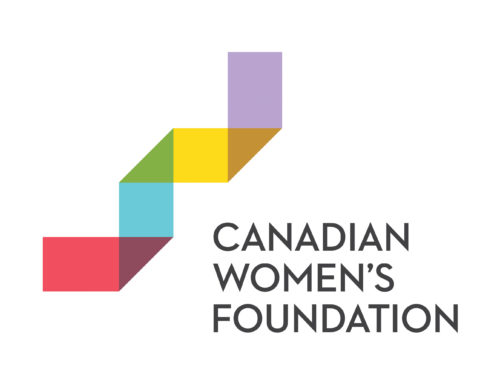Canada – and many other countries – have made great strides when it comes to advancing the status of women. But many hurdles remain, and they are high ones. One persistent issue is gender pay inequity, which remains a problem across the country.
Women make 13 per cent less on average than men, on the basis of average hourly earnings.
This trend continues at a time when more Canadian working-age women have a post-secondary education compared to men. And it persists even at some of the most diverse, educated, and equity-driven workplaces in this country: Universities.
Take the school where I work for example. In 2018, the University of Guelph’s Office of the Provost completed a statistical analysis of faculty salaries. The conclusion was that women faculty were paid less than men. Pay differentials remained even after we considered year of PhD, experience, rank, and so on. We corrected these salary anomalies with an across-the-board salary adjustment for all faculty who identify as women.
McMaster University was in the same situation when I served as its Dean of the Faculty of Social Sciences. I also played a role there in laying the groundwork for equity salary adjustments through a study of women’s experiences of gender inequality. Other Canadian universities, including the University of British Columbia and the University of Waterloo, have made similar equity salary adjustments.
The gender pay inequities observed at universities across Canada are echoed elsewhere in the labour market. A recent Statistics Canada report found that two years into their first jobs, young women graduates were paid considerably less than their male counterparts working in the same fields.
And at the other end of the job ladder, the Centre for Policy Alternatives published a report demonstrating that women executives are paid significantly less than male ones.
These reports, my experience with faculty salaries at universities, and my research on women in the labour market raise some simple questions: Why does gender pay inequity persist even in the face of institutional, policy, and societal work aimed at eliminating it? And how do we correct it?
Before addressing these questions, let’s first tackle some common misconceptions about gender pay differences, including:
- Pay differences between men and women are the result of different levels of experience, education or, in the case of faculty, research productivity.
- Gender pay inequity persists because women tend to work fewer hours or take breaks from work to have a family.
- Women are less aggressive than men when it comes to salary negotiations.
Statistically robust studies of gender salary equity, such as the one we undertook at University of Guelph, show that even when factors such as education, experience, and productivity are considered, gender-based pay differences remain. It is fair to conclude that these differences are the result of gender bias, not the quality of the individual in the job.
More recent studies are delving into the impact of family leaves of absence on pay. The hope is that these studies will improve our knowledge and understanding of the impact of gender and traditional family roles on salaries.
So why do women – whether recent graduates, faculty, or senior executives – continue to be paid less than men?
The truth is that some women experience outright sexism in hiring, evaluation, and promotion processes. They aren’t taken as seriously as male candidates; their experience and skills are discounted, and the hiring manager just doesn’t see a woman to be as good of a candidate as a man. Period.
Fortunately, we have made a lot of progress on this front, and fewer women experience such outright sexist hostility. And yet pay inequity persists. The likely answer is that inherent gender bias remains, and it is deeply embedded in processes, institutional structures, and the personal opinions of those with influence over recruitment, hiring, and promotion.
Examples of such hidden gender biases are easy to find: Worrying about whether a young woman candidate might take family leave shortly after being hired; counting publications and research grants secured by a faculty member without taking into account career interruptions; advertising for positions in publications and venues more aimed at white, male, heterosexual job seekers.
Even once a woman is hired, raises and promotions are often affected by biases. Qualifications, experience, workplace success, and productivity are open to interpretation, meaning they are affected by social norms and the beliefs of those in positions of power.
Both men and women leaders play a role in the creation and continuation of bias-embedded processes.
So how do we correct systemic, gender-based pay inequities? Here’s a few places to start:
- Be self-aware as a leader. Unpack your own biases and turn a critical eye to human resource processes, especially reward structures. Don’t assume that you do not have biases; everyone is biased in one way or another.
- Develop and use systematic processes for hiring, recruitment, promotion, and rewards. Develop a process for reviewing decisions that have already been made. Be transparent and accountable.
- Research the best evaluation schemes and borrow best practices. Identify issues such as family leave that entangle evaluation and work with a team to address such issues when giving staff reviews.
- Review and be prepared to adjust pay regularly. Systemic biases can creep into our decisions over time.
- Collect good data. Better data leads to better analyses.
Gender-based salary inequity has societal impacts that affect everybody. But not everyone sees correcting it as a priority.
Let’s be honest about what may be holding us back from addressing pay inequity. Let’s acknowledge that change can be disruptive. Let’s acknowledge any feelings we have: one might feel like one person’s gain is another’s loss. Making change means going through those steps and working through these concerns. Let’s start with knowledge, awareness, and open communication as the first step towards pay equity.
Learn More:
Three Bold Steps Toward Closing the Gender Pay Gap
No, Moms, the gender pay gap is not on us
Here’s How Wrap-Around Supports Can Help Close the Gender Pay Gap
Take Action:
Sign up for our e-newsletter to have our latest stories and resources sent to your inbox.
Follow us on Facebook and Twitter to join a national conversation about empowering girls.







